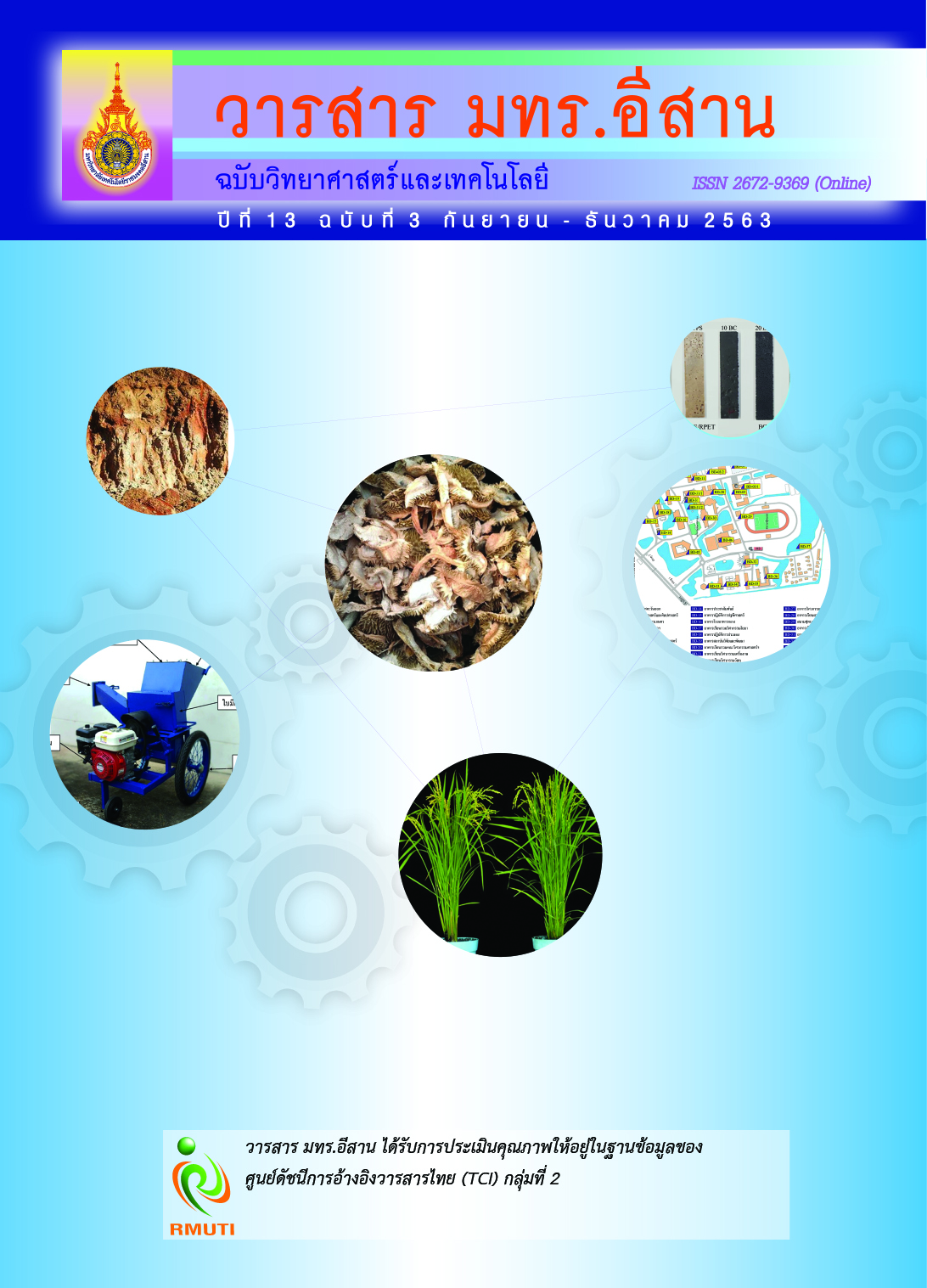Analysis of Relationship of Academic Personnel Data for Management Teaching with Method Adjustment of K-Means Combined with Association Rules
Main Article Content
Abstract
This article aimed to propose the guideline for selecting academic personnel in computer with K-Means combined with Association rules (K-MAs). Data were collected from the questionnaire on computer instruction according to curricula approved by the Office of the Higher Education Commission (OHEC). In this study, key informants were academic personnel of the Faculty of Science and Technology in Rajamangala University of Technology Suvarnabhumi that encountered problems in the differences in instructional ability, causing the difficult and complicated instructional management that will affect potential curriculum improvement. For this reason, the researcher searched for the solutions by using K-MAs, which dividing data set of academic personnel method adjustment of K-Means combined with association rules. However, K-Mas could produce the results that consider the importance of the instructors and know the group members. Besides, the rule of associations indicate that members of the group were able to instruct the same course. Therefore, it could be concluded that K-MAs technique could be used to support instructor management under the balance between instructor competency and proficient profession and to enhance human relations with fellow scholars due to the realization of professional groups. The results of this research showed that under the classification of instructor groups based on suitable professional group, there were five professional groups. Up to 3 instructors could instruct interchangeably using 18 association rules. The evaluative results of the web application for selecting academic personnel indicated that overall evaluation result was at a good level. An aspect with the lowest mean was clear and easy-to-read size of fonts (mean = 3.71). An aspect with the highest mean was accurate instructor data (mean = 4.86). Therefore, it could be concluded that the developed web application could be usefully applied to analyze computer instructor management methods with K-Means combined with Association rules.
Article Details
References
Ariya, K. (2016). A Development of an Instructional Model Based-On Differentiated Instruction Approach to Enhance the Ability of Learning Management Design of 21st Century for Student Teachers, Rajabhat University. Lampang Rajabhat University Journal. Vol. 5, No. 2, pp. 1-17
Na, S., Xumin, L., and Yong, G. (2010). Research on K-Means Clustering Algorithm: An Improved K-Means Clustering Algorithm. In 2010 Third International Symposium on Intelligent Information Technology and Security Informatics. 2-4 April 2010, Jinggangshan, China. pp. 63-67. DOI: 10.1109/IITSI.2010.74
Pengsiri, P. and Sodsee, S. (2015). A Modification of Multi-Objective Optimization Genetic Algorithm with Initial Population Partition. In Data Mining and Machine Learning, pp. 337-382
Pengsiri, P., Sodsee, S., and Meesad, P. (2018). A Comparison of Partition of Initial Population for Multi-Objective Genetic Algorithm Using by Optimal Drainage. In Proceedings of NCCIT 2018, King Mongkut’s University of Technology North Bangkok (KMUTNB). Vol. 2018, pp. 30-39
Cai-quan, X., Shao-bin, C., and Ming, D. (2013). Association Rules Mining for Discussion Information in Group Deliberation Support System. In 2013 8th International Conference on Computer Science Education (ICCSE). pp. 67-70. DOI: 10.1109/ICCSE.2013.6553885
Rakphakawong, P. and Rakphakawong, U. (2015). The Use of Traditional and Fuzzy Association Rule Mining for Student Learning Outcome Forecasting. KKU Science Journal. Vol. 43, No. 3, pp. 542-551
Mahatthanachai, B., Malaivongs, K., Somhom, S., and Tantranont, N. (2015). Association Rule of Subjects Aff ecting Student Dropout Using Apriori Algorithm. In 3rd Proceedings of Conference Kamphaeng Phet Rajabhat University. Vol. 2016, pp. 456-469
Ratchaphibun, N. (2015). Forecasting and Finding the Relationship of Factors Affecting Daily rubber Prices Using Data Mining Techniques. Thesis, Prince of Songkla University Surat Thani Campus
Chumpoonuch, S. (2016). Using Association Rules to Study Patterns of Medicine use in Thai Adult Depressed Patients Based on Medical Adherence. Unpublished Master’s Thesis, Graduate School, Silpakorn University
Pengsiri, P., Pinitkan, S., Mongkolchart, N., Wisitpongphan, N., and Meesad, P. (2014). Data Dimension Reduction by Association and Application for Analysis Smart Phone Usage Data. In 10th National Conference on Computing and Information Technology 2014, KMUTNB. pp. 528-534


